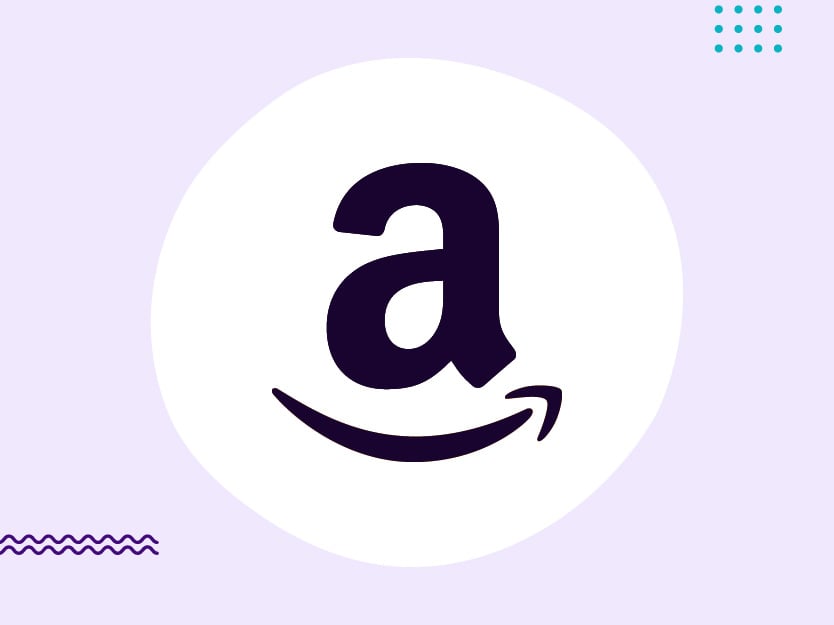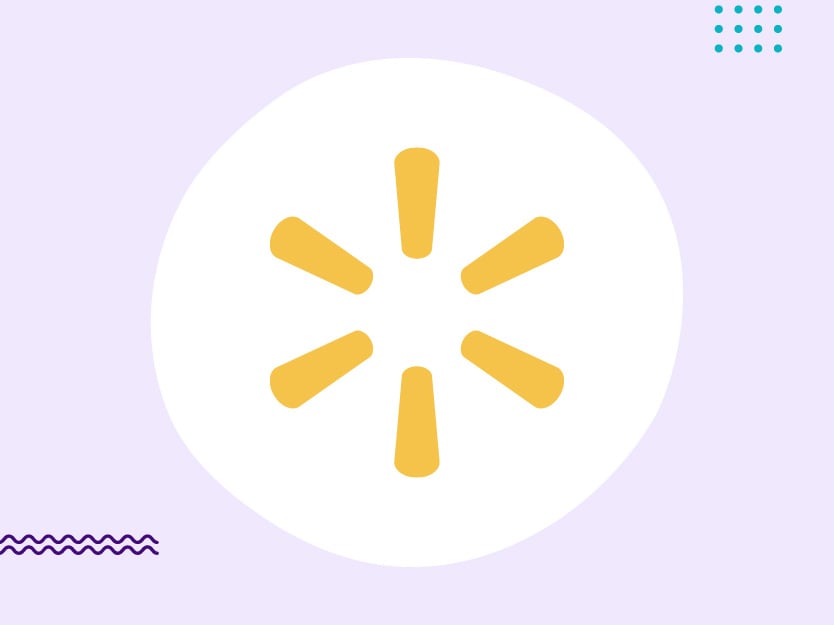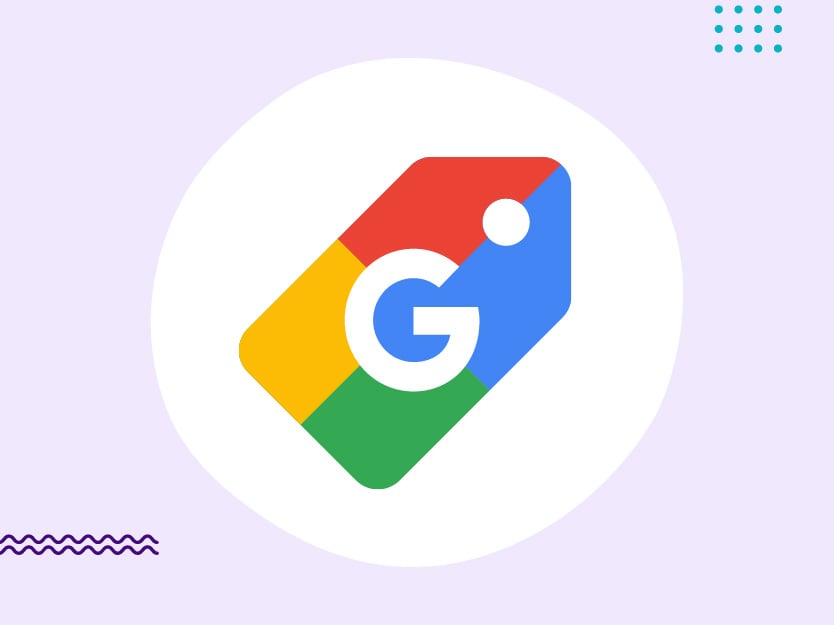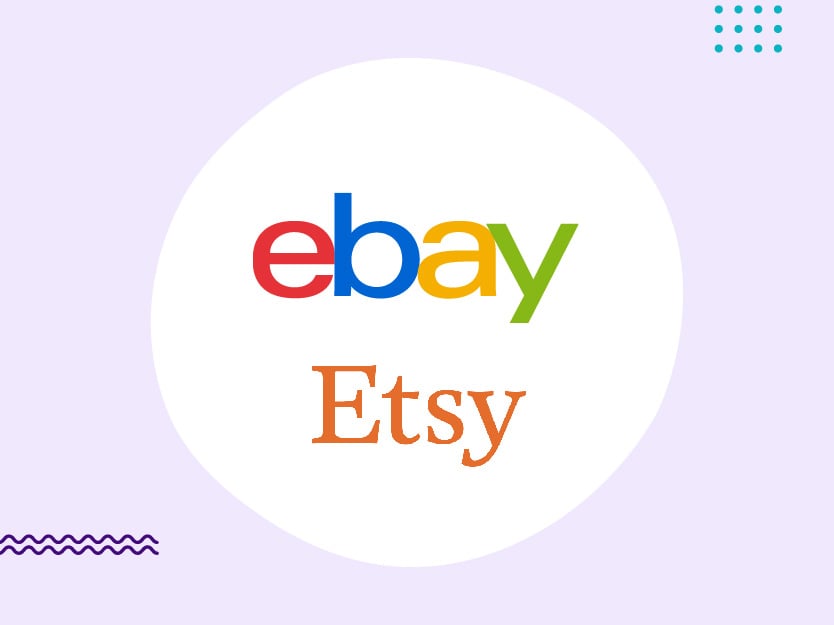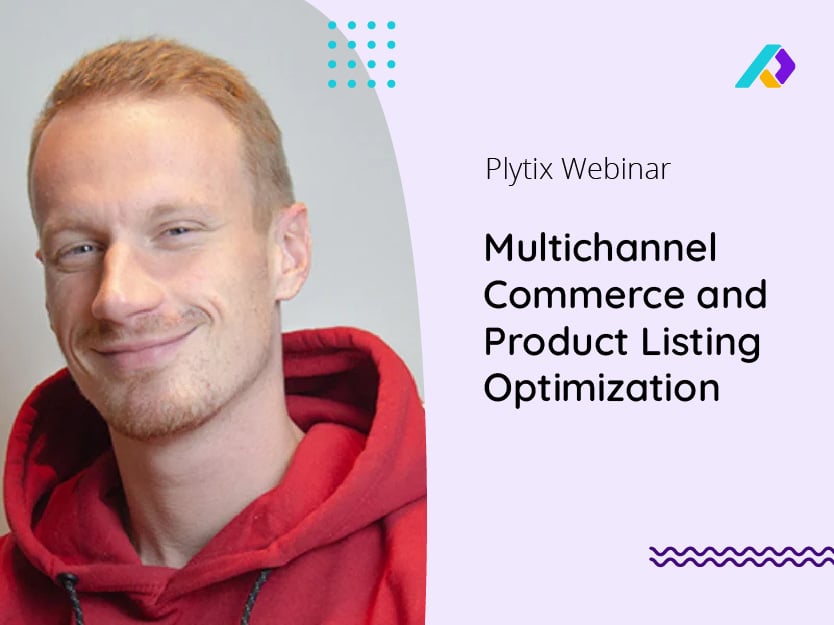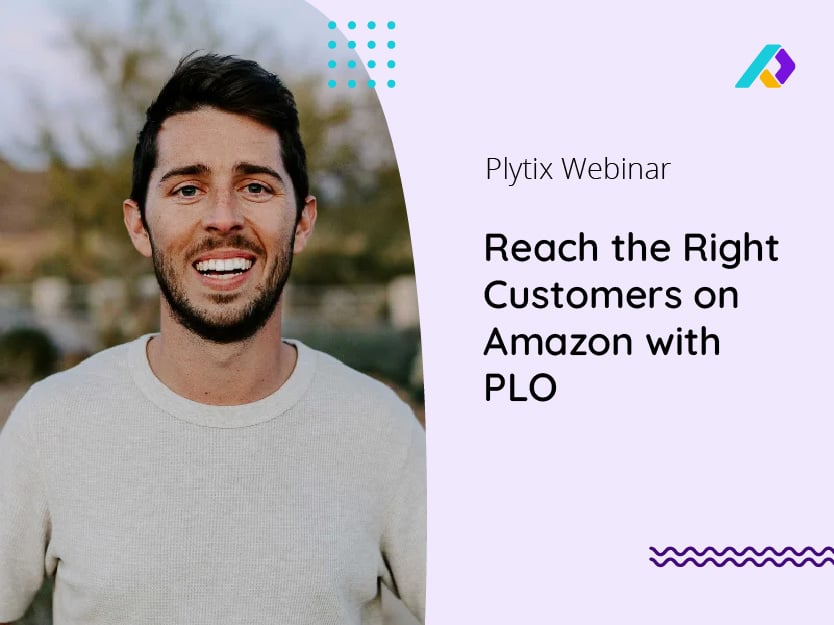What is product listing optimization?
Product listing optimization (PLO) is the process of optimizing all elements of a product listing for a specific sales channel (like Amazon or Google Shopping) in order to rank higher and sell more.
Want to take this information with you? Get your downloadable version of this page here!

Why is product listing optimization important?
Product listing optimization is essential because it helps boost traffic, encourage conversions and sales, and improve your product page's visibility on each sales channel you're on. Many companies adopt a multichannel commerce strategy to help reach more customers, and the key to being successful on each channel is by implementing PLO to reach your highest sales potential.
Using PLO can help you stand out in a saturated market, so this is a practice small to medium-sized businesses (SMBs) can use to help compete against ecommerce giants like Amazon. PLO helps even out the playing field and fosters more brand diversity—that way we have more brand options when buying a product (not just the same big brands dominating the market).

What is a product listing?
A product listing is a product page on a specific channel (like your webstore, marketplaces, or comparison shopping engines) that contains important product information. This information typically includes:
- add Product name
- add Description
- add Features
- add Specifications
- add Images and videos
- add Pricing
- add Availability
- add Reviews and ratings
This page is designed to help search engines and customers understand what your product is and the deal you are offering. A good product listing is one that’s easy to find and can convert both an active shopper (a customer with an idea of what they want in mind) and a browser (a customer who’s just looking around).
For a product to be visible, there are two factors that you need to consider when optimizing a product listing and they are search and discovery.
Optimize your product listing for search

When customers shop online, they are either shopping for a specific product or just browsing to see if a product piques their interest. If a customer is intentionally looking for a specific product, this is classified as a “search.”
Customers expect to find the product they’re searching for easily. As an ecommerce business, you need to meet this expectation and optimize your product listing for search.


Optimizing for search makes it easier for your customers to find your products no matter what channel they’re shopping on. Whether it’s Google Shopping, Amazon, or any other sales channel, they should be able to find your brand immediately.
The key to optimizing for search is targeting the right keywords or terms your customers are looking for. This is essentially SEO for your product listing.


For instance, if a customer is looking for a “three-seater leather couch”, they will use those keywords to narrow down their search.
When your product listings are optimized with high-quality content, relevant keywords, and attributes such as “three-seater couch” and “leather,” you help them find your product no matter the channel they’re on.
Optimize your product listing for discovery

While some customers know exactly what product they want to buy, others shop with a vague idea of what they’re looking for. These customers are called browsers, and this type of shopping is considered “discovery”.
They may simply be looking for “a couch” without any terms attached to their search. You need to help them find a product that matches their search. This is where optimizing for discovery comes in.


With discovery, customers need more guidance in finding a product for the first time. A key component for discovery is how the products are organized (or the product taxonomy).
If we use the couch example again, you will optimize your attributes (or categories), such as style, material, height, texture, size, and more, so that a customer can quickly filter through and discover the exact product they were hoping to find.


Ultimately, both these tactics make it easier for all customers regardless of their intent to find your product. For more information on search and discovery and why it’s important in ecommerce, read this article.
Where should you optimize your product listings?
The simple answer is wherever your products are.
Your webshop
Optimizing your product pages on your webshop will make them as informative and attractive as possible, so you’ll get more customers wanting to buy. Your products should be optimized for search and discovery, so you’ll convert all different types of buyers. And if you do PLO right, then you’ll also be targeting keywords that will help your products rank for Google search results, bringing in more traffic (and customers).
Mobile apps
Product listings need to be optimized for mobile apps—whether it’s your business’ app or for a marketplace. This is important considering that studies show that 57% of customers prefer mobile apps over other shopping channels. PLO for mobile apps will help give customers the experience they want where it’s most comfortable for them.
Marketplaces
If you sell on marketplaces, you’ll want to make sure that you optimize your product listings for those specific marketplaces. Each marketplace has its own algorithm for how to rank, so make sure you follow those requirements. Once you’ve optimized your product listing for those marketplaces, you’ll find that you have better search visibility and ranking, which should ultimately lead to more sales.
Comparison shopping engines
Make sure to optimize for the comparison shopping engines (like Google Shopping) that you sell on. Here you’ll want to make sure that you target the right keywords, give accurate product information, and provide competitive pricing and deals. This will help show that your product is the better option in comparison to your competitors.
Where should you optimize your product listings?
The simple answer is wherever your products are.
Your webshop
Optimizing your product pages on your webshop will make them as informative and attractive as possible, so you’ll get more customers wanting to buy. Your products should be optimized for search and discovery, so you’ll convert all different types of buyers. And if you do PLO right, then you’ll also be targeting keywords that will help your products rank for Google search results, bringing in more traffic (and customers).
Mobile apps
Product listings need to be optimized for mobile apps—whether it’s your business’ app or for a marketplace. This is important considering that studies show that 57% of customers prefer mobile apps over other shopping channels. PLO for mobile apps will help give customers the experience they want where it’s most comfortable for them.
Marketplaces
If you sell on marketplaces, you’ll want to make sure that you optimize your product listings for those specific marketplaces. Each marketplace has its own algorithm for how to rank, so make sure you follow those requirements. Once you’ve optimized your product listing for those marketplaces, you’ll find that you have better search visibility and ranking, which should ultimately lead to more sales.
Comparison shopping engines
Make sure to optimize for the comparison shopping engines (like Google Shopping) that you sell on. Here you’ll want to make sure that you target the right keywords, give accurate product information, and provide competitive pricing and deals. This will help show that your product is the better option in comparison to your competitors.
The difference between PLO for your webshop vs third-party channels
While the basic principles of PLO apply to all channels, the goal and approach of PLO does vary. The biggest difference you’ll find is when you’re optimizing for your webshop versus third-party channels.


Your webshop
Examples: Shopify and WooCommerce
Optimize for SEO and conversions.
-
add Fully customizable
-
add Easier to cater your Ideal Customer Profile
Third-party channels
Examples: Google Shopping, Amazon, and Retailers
Optimize for the specific channel's algorithm to rank higher.
-
add Need to tailor your content for each algorithm
-
add More restrictions on content format
The main product listing elements you should optimize
While optimizing your product information will be different with each sales channel, there are seven essential elements that are important across the board.

Titles
An optimized product title is different from a typical title in that it will be well-constructed, relevant, and exact to tell a customer what your product is from the moment they read it. An optimized title enhances your product's searchability and boosts its visibility to the right customer.
A well-constructed and exact precise title can include these elements: brand, model, and specifications.
A good example is the “Apple MacBook Pro 13″ Core i7 2.9GHz 16GB RAM”. This title tells a customer what brand it’s from, the model, and the specifications they would need to make a purchase.

Product descriptions
Product descriptions play a huge role in influencing a purchase. Research shows that 76% of online shoppers read product descriptions during the research stage of their shopping journey. Product descriptions are also helpful for your search engine optimization (SEO), which is a big part of PLO, as you can incorporate relevant keywords into your descriptions for better ranking and visibility.
One of the best practices when writing a product description is keeping your readers engaged and hooked with information that highlights the benefits of the product. Keep in mind that third-party channels will have specific requirements, so your product description will look different on different channels.

Product images
A picture is worth a thousand words, even in ecommerce this rings true. Product images can attract a shopper and help them visualize themselves using the product. They also help customers decide if a product is right for them or not. That’s why you need to make sure all product images are high quality, provide an accurate representation of the product, and show off what the product can do. You’ll need to optimize your images so that they meet the requirements of each sales channel for sizing, ratio, and format.
If you need help with your product photography, make sure to check out this article for tips on what to do.

Product videos
Product videos help show your product and its features in ways that your product information and images can’t. Using videos helps customers see your product in action so they get an even better idea of what you’re offering. And this isn’t just a nice-to-have visual, customers expect businesses to provide videos on their product pages. In fact, one survey found that customers expect to see six product images and three videos when looking at a product.
So, make sure to take the time to create quality videos that show off your product and give customers the experience they want. And of course, you’ll need to optimize the size, ratio, and format of your videos for each channel just like you do for your product images.

Keywords, taxonomy, and attributes
Just as we highlighted earlier, an important aspect to PLO is optimizing for search and discovery. Keywords, taxonomy, and attributes all play an important part in achieving that. Keywords are the search terms you want to target to help your customers better find your product, taxonomy is how your products are categorized and classified, and attributes are the characteristics of the product.
All of these come together to help your customers easily find your products. Besides, you can’t sell a product a customer can’t find, so make sure you’re set up so your customers can actually find and buy your products.

Product reviews and ratings
Using social proof (like positive reviews, testimonials, and ratings) helps build trust and credibility between your business and new customers. This is really important to use, especially if you are an SMB trying to build up a strong customer base. Having positive product reviews is not only good for converting new customers, but it also plays a part in your product listing optimization.
Good reviews help boost your search ranking. Most marketplaces use reviews as a ranking factor in their algorithms, so the better your reviews, the more likely you are to rank higher above your competitors. Make sure you encourage your current customers to leave positive (and honest) reviews to help optimize your product listings and increase sales.

Pricing
The pricing of your products is another major factor customers consider when buying. This is especially true if you sell on comparison search engines or price comparison websites. You want to keep your price competitive, but you also don’t want to sell yourself (or your product) short.
Price does indicate value, so be strategic in how you decide to price your products and what deals you offer. To better help you with that, there are tools that can help you plan out your products’ pricing.







Titles
An optimized product title is different from a typical title in that it will be well-constructed, relevant, and exact to tell a customer what your product is from the moment they read it. An optimized title enhances your product's searchability and boosts its visibility to the right customer.
A well-constructed and exact precise title can include these elements: brand, model, and specifications.
A good example is the “Apple MacBook Pro 13″ Core i7 2.9GHz 16GB RAM”. This title tells a customer what brand it’s from, the model, and the specifications they would need to make a purchase.
Product descriptions
Product descriptions play a huge role in influencing a purchase. Research shows that 76% of online shoppers read product descriptions during the research stage of their shopping journey. Product descriptions are also helpful for your search engine optimization (SEO) which is a big part of PLO as you can incorporate relevant keywords into your descriptions for better ranking and visibility.
One of the best practices when writing a product description is keeping your readers engaged and hooked with information that highlights the benefits of the product. Keep in mind that third-party channels will have specific requirements, so your product description will look different on different channels.
Product images
A picture is worth a thousand words, even in ecommerce this rings true. Product images can attract a shopper and help them visualize themselves using the product. They also help customers decide if a product is right for them or not. That’s why you need to make sure all product images are high quality, provide an accurate representation of the product, and show off what the product can do. You’ll need to optimize your images so that they meet the requirements of each sales channel for sizing, ratio, and format.
If you need help with your product photography, make sure to check out this article for tips on what to do.
Product videos
Product videos help show your product and its features in ways that your product information and images can’t. Using videos helps customers see your product in action so they get an even better idea of what you’re offering. And this isn’t just a nice-to-have visual, customers expect businesses to provide videos on their product pages. In fact, one survey found that customers expect to see six product images and three videos when looking at a product.
So, make sure to take the time to create quality videos that show off your product and give customers the experience they want. And, of course, you’ll need to optimize the size, ratio, and format of your videos for each channel just like you do for your product images.
Keywords, taxonomy, and attributes
Just as we highlighted earlier, an important aspect of PLO is optimizing for search and discovery. Keywords, taxonomy, and attributes all play an important part in achieving that. Keywords are the search terms you want to target to help your customers better find your product, taxonomy is how your products are categorized and classified, and attributes are the characteristics of the product.
All of these come together to help your customers easily find your products. Besides, you can’t sell a product a customer can’t find, so make sure you’re set up so your customers can actually find and buy your products.
Product reviews and ratings
Using social proof (like positive reviews, testimonials, and ratings) helps build trust and credibility between your business and new customers. This is really important to use, especially if you are an SMB trying to build up a strong customer base. Having positive product reviews is not only good for converting new customers, but it also plays a part in your product listing optimization.
Good reviews help boost your search ranking. Most marketplaces use reviews as a ranking factor in their algorithms, so the better your reviews, the more likely you are to rank higher above your competitors. Make sure you encourage your current customers to leave positive (and honest) reviews to help optimize your product listings and increase sales.
Pricing
The pricing of your products is another major factor customers consider when buying. This is especially true if you sell on comparison search engines or price comparison websites. You want to keep your price competitive, but you also don’t want to sell yourself (or your product) short.
Price does indicate value, so be strategic in how you decide to price your products and what deals you offer. To better help you with that, there are tools that can help you plan out your products’ pricing.
10 best practices for PLO you shouldn’t skip
Now that you know the essential elements you need to optimize on your product listing, here are ten general best practices you should make sure to follow no matter what—regardless of the channel:







Rank higher and sell more with product listing optimization

If you want to beat your competition and have your products rise above the rest, you need to make sure you optimize your product listings. To give you a full picture of PLO and how it can help you succeed in multichannel commerce, we made a white paper that gives you all the information you need plus six actionable steps to improve your product listings.
Discover how PLO can help you rank higher and sell more today.
Want to learn more about PLO for a specific channel?
Check out our resources to help you outperform your competitors on the channels you use.
Articles
Webinar - PLO Series
1. Intro
Learn the basics of maximizing exposure for your products with Multichannel Commerce and Product Listing Optimization.
2. Google Shopping
Increase exposure and conversions on Google Shopping, without blowing through your entire ad budget.
3. Amazon
Optimizing for exposure isn’t enough anymore—discover how to turn impressions into conversions on Amazon.
4. Walmart
The world’s largest retailer is now open to foreign sellers—so how can you stand out and rise to the top?
Have questions about Plytix?
Book a demo! Our sales experts will talk you through everything you need to know to make the best decision.




